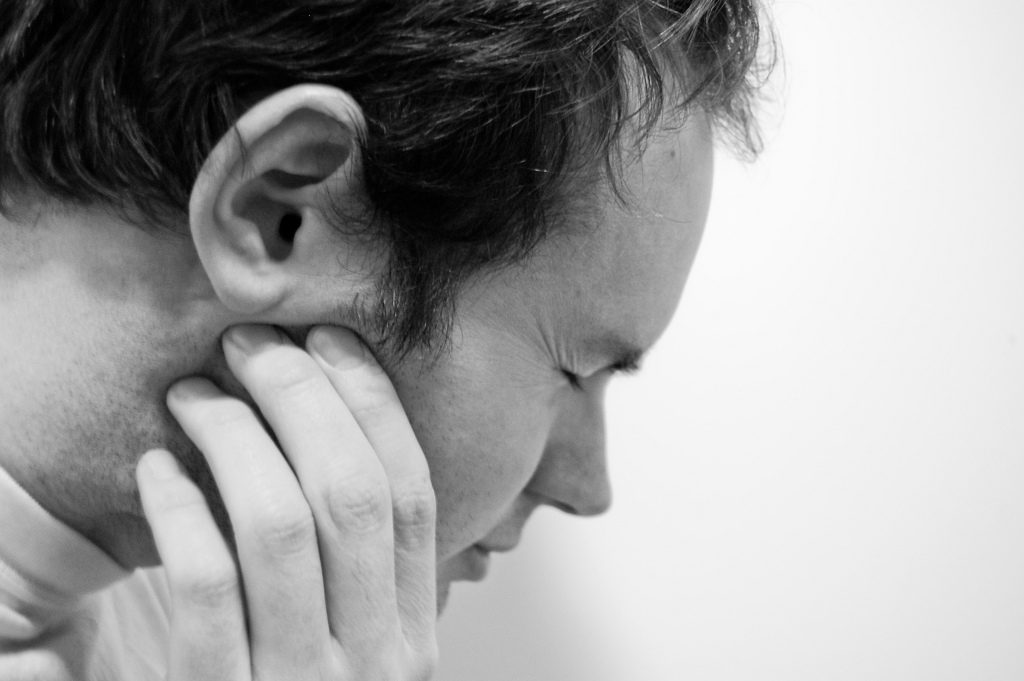LIPS TOGETHER – TEETH APART
February 4, 2019
There are many people who suffer with pain involving some area of the head. Toothaches can cause pain, but these are mostly avoidable with proper diet, home care and regular visits to your dentist. Teeth can also play an indirect role in facial/head pain.
Orofacial pain includes a number of clinical problems involving the chewing (masticatory) muscles and/or temporomandibular joints (TMJs). Problems can include TMJ discomfort involving muscle spasms in the head, neck, shoulders and/or jaw, migraines or other types of tension headaches, pain with the teeth, face or jaw; and can even play a role in anxiety and/or depression.
You swallow approximately 2,000 times per day, which causes the upper and lower teeth to come together and push against the skull. People who have an unstable bite, missing teeth, or poorly aligned teeth can have trouble because the muscles work harder to bring the teeth together, causing strain. People with seemingly good teeth/bite are also susceptible. Pain can also be caused by clenching or grinding teeth, trauma to the head and neck, or poor ergonomics. Temporomandibular disorders (TMD) affect more than 10 million Americans. Your TMJ’s are located where the skull connects your lower jaw to the muscles on the sides of your head and face controlling the joint’s movements. Women between the ages of 20 and 40 are often more frequent sufferers because of the added estrogen in their bodies.
One in eight Americans suffers from headaches. Experts estimate that 80 percent of all headaches are caused by muscle tension, which may be related to the bite. Clenching the jaw muscles creates tension in the muscles that close the jaw, the main one of which is the temporalis muscle. Signs that may indicate a headache from dental origin include: pain behind the eyes, sore jaw muscles or “tired” muscles upon awaking, teeth grinding, clicking or popping of the jaw joints, head and/or scalp is painful to the touch, earaches or ringing, neck and/or shoulder pain, and dizziness. Keep in mind that in a 24-hour period of time, your teeth should only touch 10 minutes total. If you clench or grind your teeth, your teeth are touching much more than that and I can promise you that something in the masticatory system is being affected.
Sleep disorders can also play a role. I am not just talking about sleep apnea. There are a wide range of sleep disorders and some of them will cause people to clench and/or grind as a defense mechanism of the body to achieve proper air flow.
Dentists have a variety of ways to help relieve orofacial symptoms. One way to treat these problems is called an orthotic, or splint, that is worn over the teeth to help stabilize the bite; kind of like an orthotic some wear in their shoes for alignment and balance when standing. Permanent correction may require equilibration (reshaping teeth), prosthetic dentistry and/ or orthodontics. Many use a splint on a daily basis to avoid having these other treatments done.
Orofacial pain can range from tolerable to debilitating. Maintaining or correcting your bite ensures optimal health, and proper care will help reduce or eliminate orofacial pain or discomfort. If your dentist can not help you, ask for a referral.
Most important lesson of the day: The optimal rest position of the jaw (minus the 10 minutes the teeth touch in 24 hours) is lips together, teeth slightly apart, the tip of the tongue resting just behind your upper front teeth, and you should be breathing through your nose.
Dr. St. Clair maintains a private dental practice in Rowley and Newburyport dedicated to health-centered family dentistry. If there are certain topics you would like to see written about or questions you have please email them to him at jpstclair@stclairdmd.com. You can view all previously written columns at www.jpeterstclairdentistry.com/blog.
No Comments
No comments yet.
RSS feed for comments on this post.
Sorry, the comment form is closed at this time.








